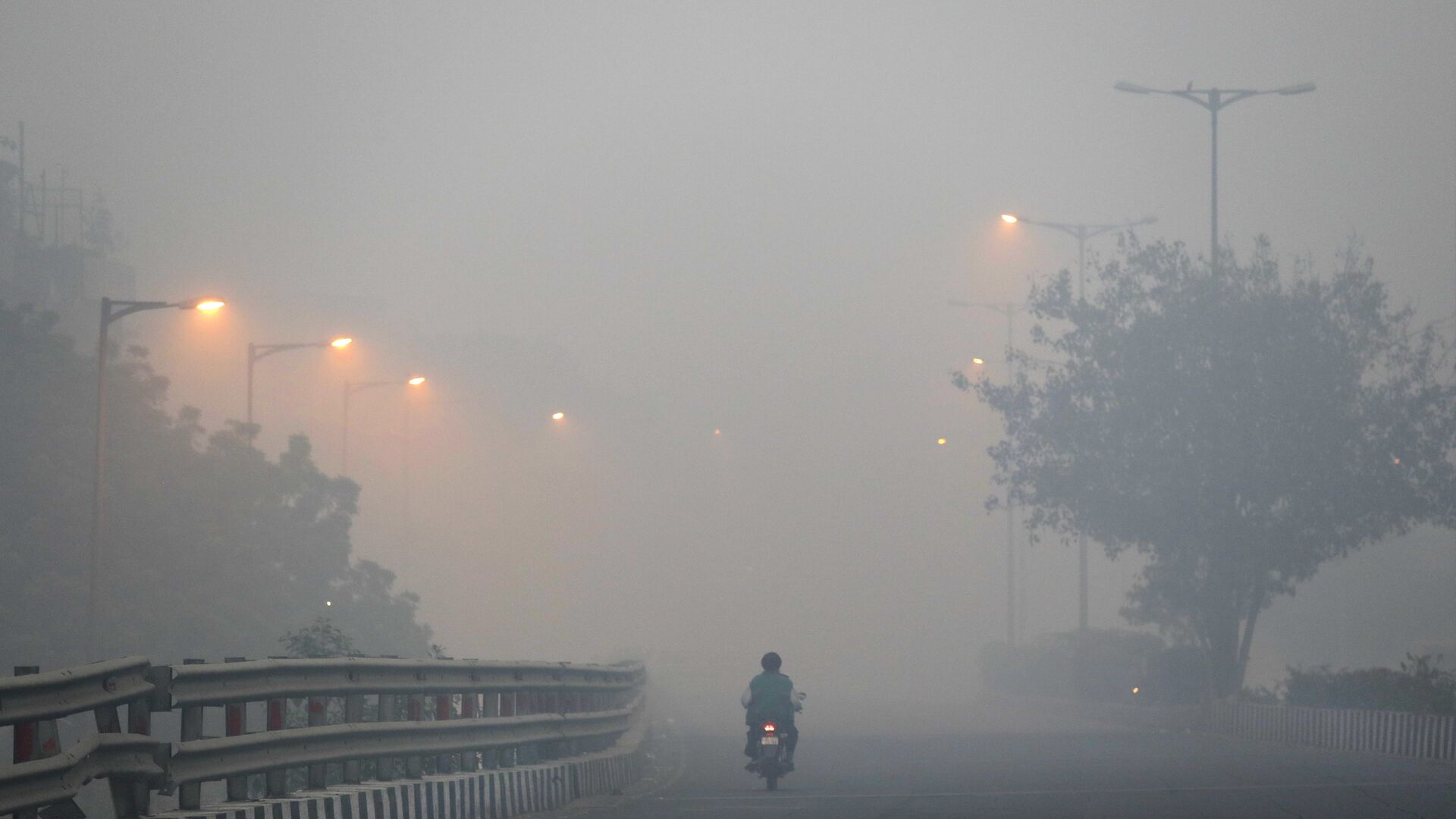https://sputnikglobe.com/20211106/health-and-environmental-experts-sound-alarm-over-thick-toxic-smog-in-delhi-after-diwali-1090525540.html
Health and Environmental Experts Sound Alarm Over Thick Toxic Smog in Delhi After Diwali
Health and Environmental Experts Sound Alarm Over Thick Toxic Smog in Delhi After Diwali
Sputnik International
The excessive use of firecrackers during Diwali, the festival of lights, and stubble burning across Punjab, Haryana, and Uttar Pradesh have created thick toxic... 06.11.2021, Sputnik International
2021-11-06T14:30+0000
2021-11-06T14:30+0000
2022-07-19T10:40+0000
air pollution
smog
https://cdn1.img.sputnikglobe.com/img/105182/32/1051823284_0:95:5226:3035_1920x0_80_0_0_d848ae86686214071a4d2cb126a0ce27.jpg
Health and environment experts have taken to social media to warn people about air pollution in Delhi as scores of people report a range of health issues in the wake of Diwali. Delhi's Air Quality Index (AQI) on Saturday reached 533 (in the "severe" category). With airborne particulate matter (PM) at 2.5 – which can cause cardiovascular and respiratory diseases such as lung cancer – people suffering from respiratory problems have been advised to stay indoors. To reduce the air pollution, the authorities have been spraying water on roads with the help of anti-smog water tanks.Dr. Arun Mohanty, professor of cardiology at Sir Gangaram Hospital in Delhi, told ANI that the toxic smog is also dangerous for people who have recently recovered from COVID. Environmentalist Vimlendu Jha said that air pollution kills 1.5 million people every year in India, and every third child in Delhi suffers from asthma due to toxic air.Hundreds of thousands of people ignored firecracker bans across India during the festival, while the burning of stubble across Delhi, Uttar Pradesh, and Haryana has only compounded the problem.The three states have adopted various measures in a bid to educate farmers about the harmful effects of burning stubble. According to official data, stubble burning accounted for 36 percent of Delhi's PM 2.5 air pollution level on Friday, the highest so far this season. An AQI from 0-50 is considered '"good," 51-100 – "satisfactory," 101-200 – "moderate," 201-300 – "poor," 301-400 – "very poor," and 401-500 – "severe."
Sputnik International
feedback@sputniknews.com
+74956456601
MIA „Rossiya Segodnya“
2021
Sangeeta Yadav
https://cdn1.img.sputnikglobe.com/img/07e4/08/1b/1080292803_0:121:960:1081_100x100_80_0_0_7490b319dab9611e309056b177265184.jpg
Sangeeta Yadav
https://cdn1.img.sputnikglobe.com/img/07e4/08/1b/1080292803_0:121:960:1081_100x100_80_0_0_7490b319dab9611e309056b177265184.jpg
News
en_EN
Sputnik International
feedback@sputniknews.com
+74956456601
MIA „Rossiya Segodnya“
Sputnik International
feedback@sputniknews.com
+74956456601
MIA „Rossiya Segodnya“
Sangeeta Yadav
https://cdn1.img.sputnikglobe.com/img/07e4/08/1b/1080292803_0:121:960:1081_100x100_80_0_0_7490b319dab9611e309056b177265184.jpg
air pollution, smog
Health and Environmental Experts Sound Alarm Over Thick Toxic Smog in Delhi After Diwali
14:30 GMT 06.11.2021 (Updated: 10:40 GMT 19.07.2022) The excessive use of firecrackers during Diwali, the festival of lights, and stubble burning across Punjab, Haryana, and Uttar Pradesh have created thick toxic smog in India's capital over the last two days. Several people in the area have been experiencing itchy throats, watery eyes, and breathing problems as a result.
Health and environment experts have taken to social media to warn people about air pollution in Delhi as scores of people report a range of health issues in the wake of Diwali.
Delhi's Air Quality Index (AQI) on Saturday reached 533 (in the "severe" category).
With airborne particulate matter (PM) at 2.5 – which can cause cardiovascular and respiratory diseases such as lung cancer – people suffering from respiratory problems have been advised to stay indoors.
"Relief is expected only from the evening of 7 November but AQI will fluctuate within the 'very poor' range," the System of Air Quality and Weather Forecasting and Research (SAFAR) said.
To reduce the air pollution, the authorities
have been spraying water on roads with the help of anti-smog water tanks.
Dr. Arun Mohanty, professor of cardiology at Sir Gangaram Hospital in Delhi, told ANI that the toxic smog is also dangerous for people who have recently recovered from COVID.
Environmentalist Vimlendu Jha said that air pollution kills 1.5 million people every year in India, and every third child in Delhi suffers from asthma due to toxic air.
Hundreds of thousands of people ignored firecracker bans across India during the festival, while the burning of stubble across Delhi, Uttar Pradesh, and Haryana has only compounded the problem.
The three states have adopted various measures in a bid to educate farmers about the harmful effects of burning stubble.
According to official data, stubble burning accounted for 36 percent of Delhi's PM 2.5 air pollution level on Friday, the highest so far this season.
An AQI from 0-50 is considered '"good," 51-100 – "satisfactory," 101-200 – "moderate," 201-300 – "poor," 301-400 – "very poor," and 401-500 – "severe."


